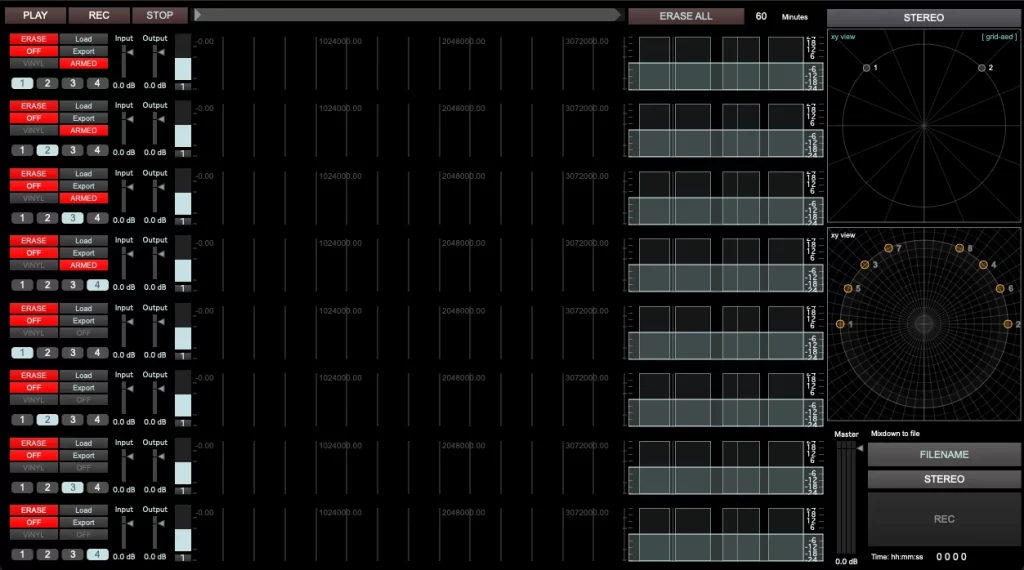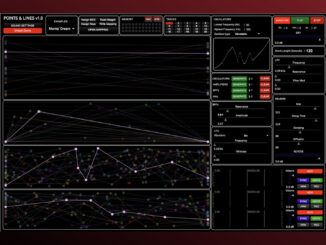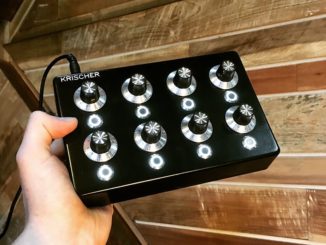Mille by Italian developer Giorgio Sancristoforo is a new standalone software Synthesizer with 1000 oscillators with quadraphonic mixing.
Good news: Mille is now available for Windows and there is a summer bundle sale with 30% OFF.
_______________________________________________________________
Article June 5th, 2023
Software synthesizers are plentiful on the internet. Mostly as a plugin, free, or as a commercial product. As a musician, keeping track of the mass of soft synths is still tricky. From the developer side, standing out from the crowd is tough.
There are exceptions. See Giorgio Sancristoforo, who develops exciting software synths using a different approach than most releases. These are standalone, not a plugin, and mostly have experimental concepts. The latest release is called Mille and is a drone Synthesizer with a massive amount of oscillators.
Details
Mille is a new standalone 1000-oscillator drone Synthesizer optimized for quadraphonic surround sound. The synth has 10 global voices consisting of blocks, including ten oscillator voices, two 5-channel modulation matrices, a reverb, a global filter, and output. Working with 1000 oscillators is anything but easy. So for this, Girgio has summarized them in blocks or voices.
Each oscillator voice features five individually detunable macro-oscillators with 20 oscillators each it’s core. Each macro-oscillator has its respective mute/on controls, waveform and duty cycle, and center frequency. The voice also offers a built-in voice 12dB/octave filter with resonance and an attack/release envelope. Plus, each macro-oscillator is spatialized in 4 channels, giving you 25 oscillators per channel.
Then, you get 200 filters and 200 LFOs, allowing you to create more versatile and flexible drone sounds. With the LFOs, you can also create 10 channels of FM and filter FM great for more harmonic-rich drones. This can be achieved via the built-in modulation matrixes, each with five slots.
There is also a global filter with resonance, saturation, and a reverb section. Of course, it should not be missing. In the output section, you can mix four channels together and also transpose the channels globally.
Giorgio Sancristoforo says:
Thanks to its architecture, Mille can create amazing dense and evolving drones that sound HUGE. Programming all these oscillators is simple and fast, do not get scared. Whether you look for “angelic choirs” or total chaos, Mille will serve you with an astounding number of resources that will sound like nothing else, and yes you can saturate everything like hell.
Performance Optimized
Mille is also performance optimized. You can use the sections to create different drones that you activate and deactivate with the trigs/gates; this makes it possible to play a performance that can evolve (even radically) over time without reprogramming the sections every time.
Further, it hosts a 4-track recorder, allowing you to tape-style record your sounds. Thanks to the 4 tracks, you can go crazy and work with in total of 2000 oscillators.
This entire drone synth is also designed for stereo and quadraphonic surround sound. More precisely, you can work with 500 or 250 oscillators per channel.
Later, you can export your single tracks, stereo, or quadraphonic files, according to your needs.
First Impression
There is currently no sound demo for Mille. But I played around with the demo and had much fun making drone sounds. Mille is certainly not a classic software Synthesizer but for experimental musicians and special sound experiments. It reminds me of the Elta Music SOLAR Synth concept in software. For me, it’s another fascinating release from Giorgio Sancristoforo.
Mille is available now for 19,50€ and runs as a standalone app on macOS Apple Silicon OS 11.0 or later and Windows. Giorgio recommends an M1 or M2 ARM-based processor with 16GB or more.
More information here: GS






This developer makes interesting things indeed
drones. ugh. gimme 1,000 kickass snare drums!
one of the more interesting, exciting developers!